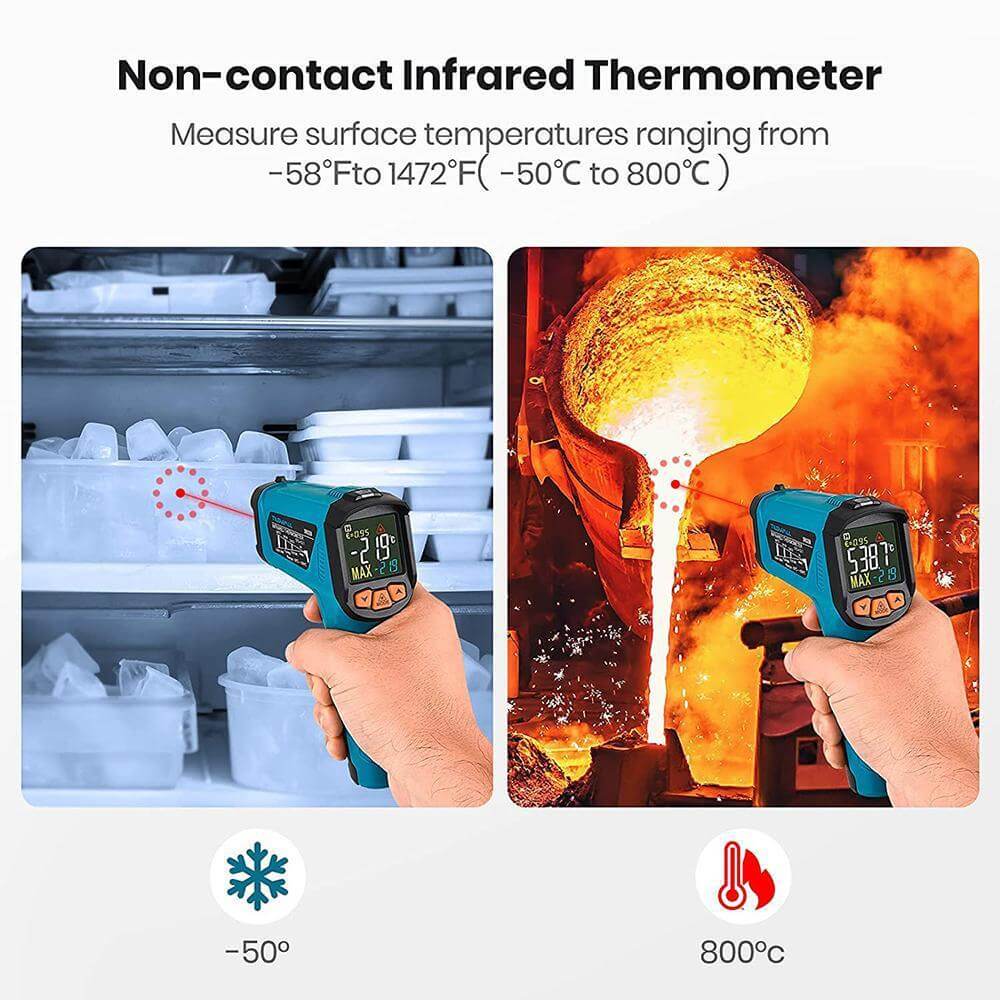
An infrared thermometer might look basic. All you have to do is aim at an item and shoot to get the object’s temperature, right? It’s a little bit more complicated. To obtain one of the most exact temperature level readings and utilize your thermometer safely, you’ll wish to regulate the circumstance as much as feasible. Comply with these pointers:
Ensure the thermostat goes to room temperature. It won’t be as exact if the thermometer is as hot or too cool.
Temp from above. Whenever feasible, position your infrared thermometer at a 90-degree angle, straight over your kitchenware, to take its temperature. The more oblique the thermometer’s watching angle, the higher the probability that it will certainly be determining surfaces besides the one you intend to temp, and the more incorrect your analysis will certainly be.
Temperature, a flat surface area
Infrared thermometers, for example, are temperature levels from a small location around their laser(s), so they do best when temping constant surface areas. You will likely obtain a problematic analysis if you attempt to temp a grill grate– the thermometer will certainly take into account the grill surface area under and around the skinny grates, along with the grates themselves. If you want to know exactly how warm your grill is, stick a frying pan on the grates and warm the skillet with the grill. When you think you might be ready to grill, add a little oil and temp the oil in the frying pan (oil has an emissivity value of 0.95).
Change the emissivity worth on your thermometer to match your kitchenware’s product. Every product has various emissivity worth (the amount of energy emitted by any item, measured on a scale from 0 to 1). Changing this value on your thermostat helps make certain even more precise results. You can find different emissivity charts online. Keep in mind that the specified worths are constantly approximate; your detailed cookware may have various values.
Include a slim layer of oil to your skillet, griddle, or flattop if you’re making pancakes, searing a steak, or doing anything else that involves fat. Temp the oil. Oil has a known emissivity of 0.95, so it’s less complicated for your infrared thermostat to temp correctly.
Never aim the laser at a person’s face. The laser guide can damage their vision.
Maintain it tidy
Dirt, grease, and dust can interfere with the thermometer’s analysis. (For comparable factors, the thermometer will also be much less accurate in humid or smoky conditions.) Wipe the viewfinder with a clean cloth or cotton swab, applying a little rubbing alcohol to the cloth/swab if necessary. Never get any part of the thermometer wet! You can harm it.
Learn more about your thermostat– and also your cookware. It might not always be feasible to adhere to these ideal techniques– you can not put oil on an exterior pizza stove rock or temp the rock at a 90-degree angle.
Because of this, it’s not constantly functional to expect your thermostat to offer you the precise temperature of your pots and pans. (This is additionally why we do not suggest certain target cookware temperature levels for scorching steaks, making pancakes, or barbecuing poultry– you may never obtain the certain worths we recommend.) But if you utilize your thermostat regularly, you’ll discover exactly how to interpret even worths you recognize to be incorrect.
For example, possibly you’ll find out that your pizza stove makes the best pies when your infrared thermometer is set to an emissivity worth of 0.89. As well as reviews in between 690 and 725 levels, even though you understand the oven is hotter than that. If you accept a specific margin of error, you can still get a lot of useful information from this tool– information that aids you to be a more consistent, effective cook.
Now you can buy the Tilswall infrared thermometer gun at Tilswall Amazon shop.